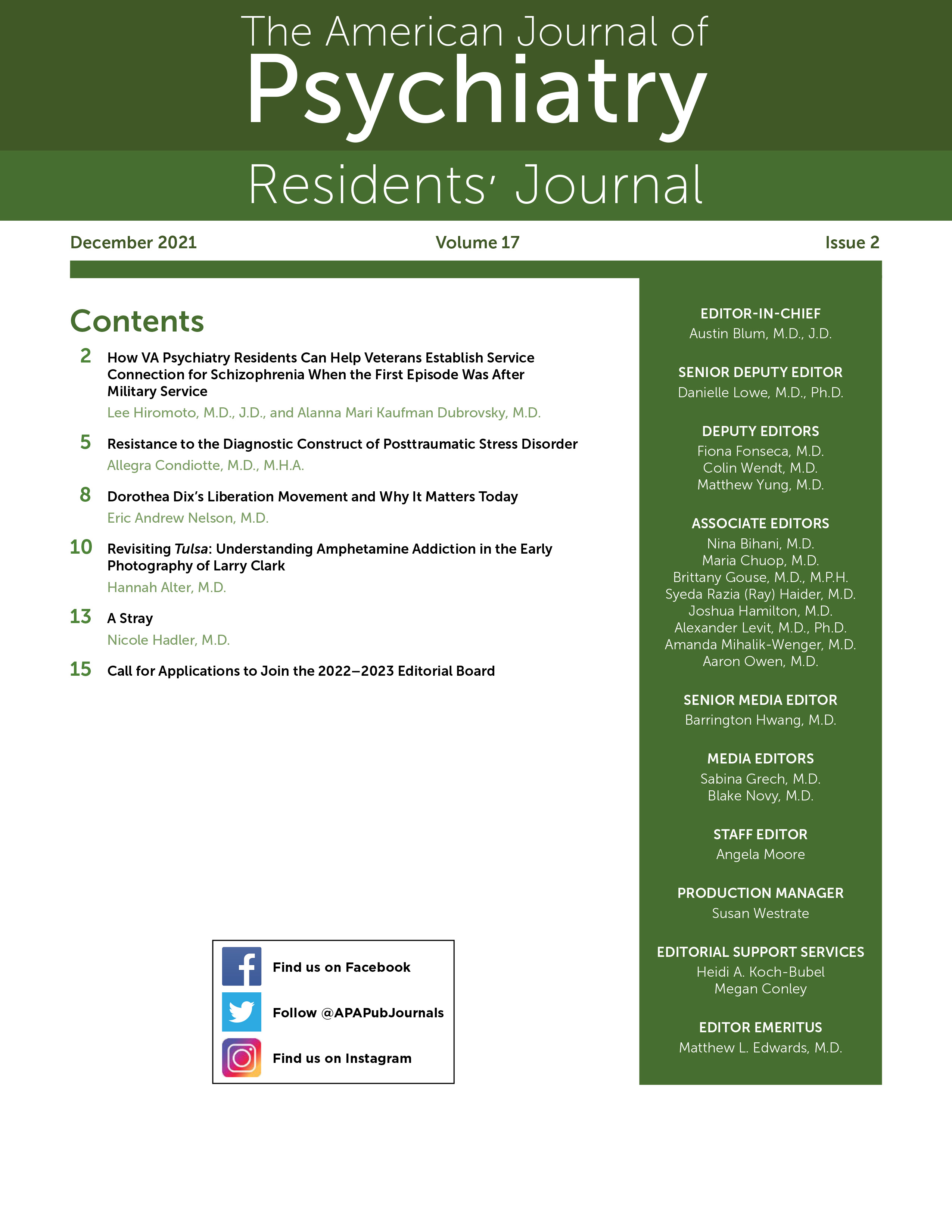How VA Psychiatry Residents Can Help Veterans Establish Service Connection for Schizophrenia When the First Episode Was After Military Service
Abstract
Hypothetical Cases
[Introduction]
What Determines Service Connection?
How Residents Can Document Service Connection For Schizophrenia
Psychosis Developing Within 1 Year After Leaving Military Service
Prodromal Schizophrenia During Military Service
The Genesis of Schizophrenia Using the Stress-Vulnerability Model
Case Outcomes
Conclusions
Key Points/Clinical Pearls
Footnote
References
Information & Authors
Information
Published In
History
Authors
Metrics & Citations
Metrics
Citations
Export Citations
If you have the appropriate software installed, you can download article citation data to the citation manager of your choice. Simply select your manager software from the list below and click Download.
For more information or tips please see 'Downloading to a citation manager' in the Help menu.
View Options
View options
PDF/EPUB
View PDF/EPUBGet Access
Login options
Already a subscriber? Access your subscription through your login credentials or your institution for full access to this article.
Personal login Institutional Login Open Athens loginNot a subscriber?
PsychiatryOnline subscription options offer access to the DSM-5-TR® library, books, journals, CME, and patient resources. This all-in-one virtual library provides psychiatrists and mental health professionals with key resources for diagnosis, treatment, research, and professional development.
Need more help? PsychiatryOnline Customer Service may be reached by emailing [email protected] or by calling 800-368-5777 (in the U.S.) or 703-907-7322 (outside the U.S.).
